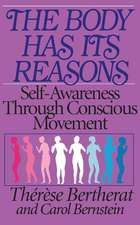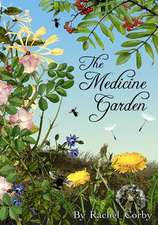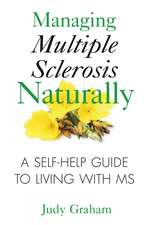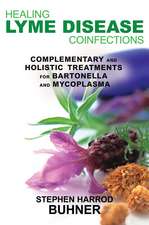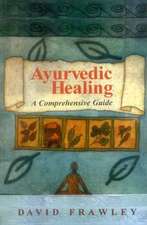Reclaiming Life after Trauma: Healing PTSD with Cognitive-Behavioral Therapy and Yoga
Autor Daniel Mintie LCSW, Julie K. Staples Ph.D.en Limba Engleză Paperback – 11 iul 2018
Integrative tools for healing the traumatized mind and body
• Combines cutting-edge Western cognitive-behavioral therapy (CBT) and ancient Eastern wisdom to heal Post-Traumatic Stress Disorder (PTSD)
• Teaches Kundalini yoga practices specifically designed to reset parts of the brain and body affected by PTSD
• Presents a fast-acting, holistic, evidence-based, and drug-free program for eliminating PTSD symptoms and restoring health, vitality, and joy
Trauma, the Greek word for “wound,” is the most common form of suffering in the world today. An inescapable part of living, the bad things that happen to us always leave aftereffects in both body and mind. While many people experience these aftereffects and move on, millions of others develop Post-Traumatic Stress Disorder (PTSD)--a painful, chronic, and debilitating barrier to happiness.
Reclaiming Life after Trauma addresses both the physical and psychological expressions of PTSD, presenting an integrative, fast-acting, evidence-based, and drug-free path to recovery. Authors Daniel Mintie, LCSW, and Julie K. Staples, Ph.D., begin with an overview of PTSD and the ways in which it changes our bodies and minds. They present research findings on cognitive-behavioral therapy (CBT) and yoga, giving the reader insights into how these powerful modalities can counteract and reverse the physical and mental aftereffects of trauma.
• Combines cutting-edge Western cognitive-behavioral therapy (CBT) and ancient Eastern wisdom to heal Post-Traumatic Stress Disorder (PTSD)
• Teaches Kundalini yoga practices specifically designed to reset parts of the brain and body affected by PTSD
• Presents a fast-acting, holistic, evidence-based, and drug-free program for eliminating PTSD symptoms and restoring health, vitality, and joy
Trauma, the Greek word for “wound,” is the most common form of suffering in the world today. An inescapable part of living, the bad things that happen to us always leave aftereffects in both body and mind. While many people experience these aftereffects and move on, millions of others develop Post-Traumatic Stress Disorder (PTSD)--a painful, chronic, and debilitating barrier to happiness.
Reclaiming Life after Trauma addresses both the physical and psychological expressions of PTSD, presenting an integrative, fast-acting, evidence-based, and drug-free path to recovery. Authors Daniel Mintie, LCSW, and Julie K. Staples, Ph.D., begin with an overview of PTSD and the ways in which it changes our bodies and minds. They present research findings on cognitive-behavioral therapy (CBT) and yoga, giving the reader insights into how these powerful modalities can counteract and reverse the physical and mental aftereffects of trauma.
Preț: 88.83 lei
Nou
Puncte Express: 133
Preț estimativ în valută:
16.100€ • 17.79$ • 14.06£
16.100€ • 17.79$ • 14.06£
Carte disponibilă
Livrare economică 15-29 martie
Livrare express 01-07 martie pentru 23.09 lei
Preluare comenzi: 021 569.72.76
Specificații
ISBN-13: 9781620556344
ISBN-10: 1620556340
Pagini: 192
Ilustrații: 59 b&w illustrations
Dimensiuni: 152 x 229 x 13 mm
Greutate: 0.32 kg
Editura: Inner Traditions/Bear & Company
Colecția Healing Arts Press
ISBN-10: 1620556340
Pagini: 192
Ilustrații: 59 b&w illustrations
Dimensiuni: 152 x 229 x 13 mm
Greutate: 0.32 kg
Editura: Inner Traditions/Bear & Company
Colecția Healing Arts Press
Notă biografică
Daniel Mintie, LCSW, is an adjunct faculty member at Georgetown University's School of Medicine and a cognitive-behavioral therapist, teacher and writer with 30 years experience in the field of integrative wellness. He hosts the weekly interactive webinar All Things CBT. Daniel has taught CBT at universities and training centers worldwide. He is the author of My Tropic of Cancer and Dharma Wheels and coauthor of Reclaiming Life after Trauma. Daniel lives and has a clinical practice in Taos, New Mexico.
Extras
Chapter 4
The Hidden Wisdom of Symptoms
Far from being simply the troubling aftereffects of trauma, PTSD symptoms frequently express our core values, resourcefulness, and commitment to survival. Our brains take any input they receive and create the output they determine to be most important to us. When we develop PTSD, our brains always create such symptoms for good reasons. Let’s look at a sample of these reasons, grouped under their particular symptom clusters.
Good Reasons to Feel Negative Emotion
Anger holds my perpetrator accountable and expresses my sense of morality and justice
Guilt expresses my willingness to accept some responsibility for what happened
Rage keeps others at bay and makes me feel safer and more powerful
Fear is realistic: the world is a dangerous place
Good Reasons for Avoidance
Avoiding triggering situations protects me from anxiety or from again being injured
Given what I’ve experienced, avoidance demonstrates wisdom
Avoidance is a form of self-care
Good Reasons for Emotional Numbness
If I shut my heart down I won’t feel pain
Indifference protects me from further disappointment
Given what I’ve experienced, positive feelings would be inappropriate
Dissociation enables me to tolerate situations I otherwise couldn’t
Do these lists help you begin to understand your brain’s rationale for producing such symptoms? This understanding is an essential first step to resetting the output your brain is currently providing. We’ll now share with you a Discovery tool designed to help drill down and identify your brain’s rational for producing PTSD symptoms.
Experiment III: Discovering a Symptom’s Hidden Wisdom
Step One: Take out your lab book, date this entry, and write down a symptom you’d like to analyze.
Step Two: Write beneath it all the benefits of having this symptom
Step Three: Next to these, write down the good things these benefits says about you as a human being
How did you do with your own Discovery? Were you able to identify some benefits of your symptom and the nice things these benefits say about you? Sometimes recognizing the benefits of a troubling symptom can be challenging. If you find yourself getting stuck, you can approach the question in another way. Ask yourself, What would I have to give up if this symptom suddenly vanished? For example: If I was never again angry when I thought about being attacked, what else would go away? Possible answers might include: my identity as a victim or survivor, my interest in blaming my perpetrator, a community of angry fellow-victims.
You might also struggle to find the good things a particular benefit says about you as a human being. It may help to ask yourself questions like, How does this benefit express my core values and beliefs? What does it say about how I care for myself and others? How does this benefit reflect my moral code and sense of justice?
Using Discovery, many of our patients begin to experience a fundamental shift in perception. Instead of seeing symptoms solely as problems or defects, they begin to appreciate the wisdom these symptoms embody. Often this leads to patients being more compassionate with themselves and to reductions in feelings of shame, defectiveness, and inferiority. The 4 traumatized brain is actually pretty smart! Even when producing troubling symptoms it does amazing work promoting what it sees as the deep self-interests of the person who is feeding and housing it and thus keeping it alive.
Price It
When we go into a store our brains become real-time calculators of price and benefit. Examining an item of clothing or a kitchen appliance, we weigh its price against the benefit we believe it will bring. If the benefit is greater than the price we may purchase the item; if not we’ll likely keep shopping.
Precisely this reckoning is the next step in evaluating the wisdom Discovery reveals. Once we’ve identified the benefits of a symptom and the ways in which it expresses our core values we can consider the symptom’s cost. In addition we’ll add a numeric component to the equation to quantify and further clarify our perception of value. One number will express the appeal of the benefits, the other the weight of the price. Each will be a number between 0 and 100. We can think of the price number as units of payment, the benefit number as units of value. See figure 4.5 for how Alicia priced anxiety and figure 4.6 for how Benito priced isolating himself from others.
After pricing, Alicia was shocked at the poor bargain she’d been making with herself for many years. Her initial impression was that the benefits of anxiety represented a “good deal.” After Pricing she became angry at being cheated for so long and her desire to crush her anxiety and relinquish its benefits became quite strong. Alicia was now a candidate for cognitive-behavioral therapy. She quickly reset her brain’s output (anxiety) using the tools we taught her and began to reclaim a life of peace, joy, and connection with others.
Benito made the opposite decision. The emotional price he paid for physical/social/legal safety seemed a reasonably good bargain. Benito decided he didn’t want our help with this particular symptom at this time and our work with him went in another direction.
Experiment IV: Price It
Step One: Take out your lab book, date this entry, and write down any symptoms you’d like to price.
Step Two: Itemize beneath it all the benefits of having this symptom
Step Three: Itemize next the price you pay to get these benefits
Step Four: Add a number at the end of each list.
How does your pricing structure look? Like Alicia, are there benefits that you’re purchasing at too high a price? Like Benito do some benefits look like a good bargain? The next chapter will teach you tools to walk away from habits of body and mind that have outworn their usefulness and no longer represent a “good bargain” in the big picture of your life.
The Hidden Wisdom of Symptoms
Far from being simply the troubling aftereffects of trauma, PTSD symptoms frequently express our core values, resourcefulness, and commitment to survival. Our brains take any input they receive and create the output they determine to be most important to us. When we develop PTSD, our brains always create such symptoms for good reasons. Let’s look at a sample of these reasons, grouped under their particular symptom clusters.
Good Reasons to Feel Negative Emotion
Anger holds my perpetrator accountable and expresses my sense of morality and justice
Guilt expresses my willingness to accept some responsibility for what happened
Rage keeps others at bay and makes me feel safer and more powerful
Fear is realistic: the world is a dangerous place
Good Reasons for Avoidance
Avoiding triggering situations protects me from anxiety or from again being injured
Given what I’ve experienced, avoidance demonstrates wisdom
Avoidance is a form of self-care
Good Reasons for Emotional Numbness
If I shut my heart down I won’t feel pain
Indifference protects me from further disappointment
Given what I’ve experienced, positive feelings would be inappropriate
Dissociation enables me to tolerate situations I otherwise couldn’t
Do these lists help you begin to understand your brain’s rationale for producing such symptoms? This understanding is an essential first step to resetting the output your brain is currently providing. We’ll now share with you a Discovery tool designed to help drill down and identify your brain’s rational for producing PTSD symptoms.
Experiment III: Discovering a Symptom’s Hidden Wisdom
Step One: Take out your lab book, date this entry, and write down a symptom you’d like to analyze.
Step Two: Write beneath it all the benefits of having this symptom
Step Three: Next to these, write down the good things these benefits says about you as a human being
How did you do with your own Discovery? Were you able to identify some benefits of your symptom and the nice things these benefits say about you? Sometimes recognizing the benefits of a troubling symptom can be challenging. If you find yourself getting stuck, you can approach the question in another way. Ask yourself, What would I have to give up if this symptom suddenly vanished? For example: If I was never again angry when I thought about being attacked, what else would go away? Possible answers might include: my identity as a victim or survivor, my interest in blaming my perpetrator, a community of angry fellow-victims.
You might also struggle to find the good things a particular benefit says about you as a human being. It may help to ask yourself questions like, How does this benefit express my core values and beliefs? What does it say about how I care for myself and others? How does this benefit reflect my moral code and sense of justice?
Using Discovery, many of our patients begin to experience a fundamental shift in perception. Instead of seeing symptoms solely as problems or defects, they begin to appreciate the wisdom these symptoms embody. Often this leads to patients being more compassionate with themselves and to reductions in feelings of shame, defectiveness, and inferiority. The 4 traumatized brain is actually pretty smart! Even when producing troubling symptoms it does amazing work promoting what it sees as the deep self-interests of the person who is feeding and housing it and thus keeping it alive.
Price It
When we go into a store our brains become real-time calculators of price and benefit. Examining an item of clothing or a kitchen appliance, we weigh its price against the benefit we believe it will bring. If the benefit is greater than the price we may purchase the item; if not we’ll likely keep shopping.
Precisely this reckoning is the next step in evaluating the wisdom Discovery reveals. Once we’ve identified the benefits of a symptom and the ways in which it expresses our core values we can consider the symptom’s cost. In addition we’ll add a numeric component to the equation to quantify and further clarify our perception of value. One number will express the appeal of the benefits, the other the weight of the price. Each will be a number between 0 and 100. We can think of the price number as units of payment, the benefit number as units of value. See figure 4.5 for how Alicia priced anxiety and figure 4.6 for how Benito priced isolating himself from others.
After pricing, Alicia was shocked at the poor bargain she’d been making with herself for many years. Her initial impression was that the benefits of anxiety represented a “good deal.” After Pricing she became angry at being cheated for so long and her desire to crush her anxiety and relinquish its benefits became quite strong. Alicia was now a candidate for cognitive-behavioral therapy. She quickly reset her brain’s output (anxiety) using the tools we taught her and began to reclaim a life of peace, joy, and connection with others.
Benito made the opposite decision. The emotional price he paid for physical/social/legal safety seemed a reasonably good bargain. Benito decided he didn’t want our help with this particular symptom at this time and our work with him went in another direction.
Experiment IV: Price It
Step One: Take out your lab book, date this entry, and write down any symptoms you’d like to price.
Step Two: Itemize beneath it all the benefits of having this symptom
Step Three: Itemize next the price you pay to get these benefits
Step Four: Add a number at the end of each list.
How does your pricing structure look? Like Alicia, are there benefits that you’re purchasing at too high a price? Like Benito do some benefits look like a good bargain? The next chapter will teach you tools to walk away from habits of body and mind that have outworn their usefulness and no longer represent a “good bargain” in the big picture of your life.
Cuprins
Acknowledgments
Introduction
1 Roots of the Problem
2 Embodied Stress
3 Cognitive-Behavioral Therapy
4 The Hidden Wisdom of Symptoms
5 Rewire Your Brain
6 Belief: The Heart of the Matter
7 Yoga: Embodied Wellness
8 Sleep Well
9 The Road Forward
Notes
Bibliography
Index
About the Authors
Introduction
1 Roots of the Problem
2 Embodied Stress
3 Cognitive-Behavioral Therapy
4 The Hidden Wisdom of Symptoms
5 Rewire Your Brain
6 Belief: The Heart of the Matter
7 Yoga: Embodied Wellness
8 Sleep Well
9 The Road Forward
Notes
Bibliography
Index
About the Authors
Recenzii
“A valuable and inspiring contribution to the treatment of the post-traumatic stress that pains and limits so many of us. Well researched, clearly written, and practical.”
“All of us have experienced trauma in our lives, and some of it limits our ability to enjoy life to its fullest potential. Reclaiming Life after Trauma presents a host of proven Western and Eastern approaches that are explained in easy-to-understand language and backed by well-referenced science and decades of experience by the authors. Whether you are aware of your emotional limitations or suffer from established PTSD, this book is an important guide for your path to a vibrant and full life.”
“Reclaiming Life after Trauma is a phenomenal work. It explains PTSD in a straightforward, understandable yet thorough way. Mintie and Staples offer practical strategies for overcoming trauma symptoms. The book validates the pervasive consequences of trauma on the mind and the body, contains stories of patients we can relate to, and conveys hope that we can reverse many of trauma’s effects. The inclusion of yoga therapy addresses the crucial physical aspects of this complex disorder. Reclaiming Life after Trauma is destined to become a classic in the field of trauma treatment.”
“Reclaiming Life after Trauma combines cognitive-behavioral therapy and yoga therapy. The authors show how frameworks stemming from Western and Eastern systems can be integrated to inform a powerful biopsychosocial approach to the management of trauma. The book is theoretically grounded yet contains many practical tools and techniques that can be readily applied by the reader. A most-significant contribution to the field of integrative health care and trauma management.”
“A brilliantly presented book on the most debilitating health issues of the twentyfirst century: trauma and PTSD. Reclaiming Life after Trauma is a road map to rewiring the brain and embodying wellness. A well-timed book, I can confidently affirm that it will have a remarkable positive impact on people’s lives.”
“To recover from trauma is to awaken the seed of resilience inherent within each of us and to stabilize our renewed inner experience with supportive habits into a new way of being. The practice of yoga and meditation with cognitive-behavioral therapy forms an effective partnership to engage the physiological and structural aspects of the body and identify thought patterns that keep us in the past. Reclaiming Life after Trauma skillfully shows us that no matter what the source of the trauma, post-traumatic growth and full recovery are within reach.”
“Integrating cognitive behavioral therapy with Kundalini Yoga, Mintie and Staples weave the wisdom of both disciplines to effectively reduce suffering present with trauma. Practical strategies engage the reader to increase his or her awareness of maladaptive thinking patterns and create impact on his or her own pain patterns. Breathwork and go-to steps encourage participation. Case studies illustrate the process of change, including stumbling blocks met along the way. Well referenced yet easily understood. This is important information to be shared with professionals and the general public alike.”
“In this wise and compassionate book, the authors offer a clear, practical, stepby-step guide for those with PTSD who wish to find a path to joy, hope, and freedom from suffering. Grounded in research based on their wealth of professional experience and integrating key tenets, strategies, and principles from both cognitive-behavioral therapy and Kundalini Yoga, their innovative program includes a range of simple but powerful tools, which can be used either at home or in a therapeutic setting. Although specifically designed for those who have experienced trauma, this program would be beneficial to anyone seeking to lead a more joyful, peaceful, and fulfilling life. The book is a wonderful read, eloquently written and deftly interwoven with compelling stories of men and women who have used the tools of this program to transform their lives.”
“All of us have experienced trauma in our lives, and some of it limits our ability to enjoy life to its fullest potential. Reclaiming Life after Trauma presents a host of proven Western and Eastern approaches that are explained in easy-to-understand language and backed by well-referenced science and decades of experience by the authors. Whether you are aware of your emotional limitations or suffer from established PTSD, this book is an important guide for your path to a vibrant and full life.”
“Reclaiming Life after Trauma is a phenomenal work. It explains PTSD in a straightforward, understandable yet thorough way. Mintie and Staples offer practical strategies for overcoming trauma symptoms. The book validates the pervasive consequences of trauma on the mind and the body, contains stories of patients we can relate to, and conveys hope that we can reverse many of trauma’s effects. The inclusion of yoga therapy addresses the crucial physical aspects of this complex disorder. Reclaiming Life after Trauma is destined to become a classic in the field of trauma treatment.”
“Reclaiming Life after Trauma combines cognitive-behavioral therapy and yoga therapy. The authors show how frameworks stemming from Western and Eastern systems can be integrated to inform a powerful biopsychosocial approach to the management of trauma. The book is theoretically grounded yet contains many practical tools and techniques that can be readily applied by the reader. A most-significant contribution to the field of integrative health care and trauma management.”
“A brilliantly presented book on the most debilitating health issues of the twentyfirst century: trauma and PTSD. Reclaiming Life after Trauma is a road map to rewiring the brain and embodying wellness. A well-timed book, I can confidently affirm that it will have a remarkable positive impact on people’s lives.”
“To recover from trauma is to awaken the seed of resilience inherent within each of us and to stabilize our renewed inner experience with supportive habits into a new way of being. The practice of yoga and meditation with cognitive-behavioral therapy forms an effective partnership to engage the physiological and structural aspects of the body and identify thought patterns that keep us in the past. Reclaiming Life after Trauma skillfully shows us that no matter what the source of the trauma, post-traumatic growth and full recovery are within reach.”
“Integrating cognitive behavioral therapy with Kundalini Yoga, Mintie and Staples weave the wisdom of both disciplines to effectively reduce suffering present with trauma. Practical strategies engage the reader to increase his or her awareness of maladaptive thinking patterns and create impact on his or her own pain patterns. Breathwork and go-to steps encourage participation. Case studies illustrate the process of change, including stumbling blocks met along the way. Well referenced yet easily understood. This is important information to be shared with professionals and the general public alike.”
“In this wise and compassionate book, the authors offer a clear, practical, stepby-step guide for those with PTSD who wish to find a path to joy, hope, and freedom from suffering. Grounded in research based on their wealth of professional experience and integrating key tenets, strategies, and principles from both cognitive-behavioral therapy and Kundalini Yoga, their innovative program includes a range of simple but powerful tools, which can be used either at home or in a therapeutic setting. Although specifically designed for those who have experienced trauma, this program would be beneficial to anyone seeking to lead a more joyful, peaceful, and fulfilling life. The book is a wonderful read, eloquently written and deftly interwoven with compelling stories of men and women who have used the tools of this program to transform their lives.”
Descriere
Integrative tools for healing the traumatized mind and body.





